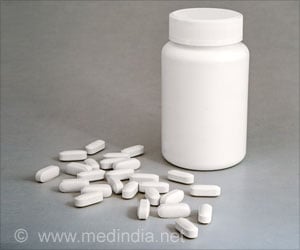A marked and broad expansion in antidepressant treatment occurred among Americans older than 6 years between 1996 and 2005, although treatment rates remain low among racial and ethnic minorities.
A marked and broad expansion in antidepressant treatment occurred among Americans older than 6 years between 1996 and 2005, although treatment rates remain low among racial and ethnic minorities, according to a report in the August issue of Archives of General Psychiatry, one of the JAMA/Archives journals.
Treatment for mental health conditions is becoming more common in the United States, according to background information in the article. “Several factors may have contributed to this trend, including a broadening in concepts of need for mental health treatment, campaigns to promote mental health care and growing public acceptance of mental health treatments,” the authors write. “In parallel with growth in mental health service usage, psychotropic medications have become increasingly prominent in treatment.” Antidepressants are now the most commonly prescribed class of medications in the United States.Mark Olfson, M.D., M.P.H., of Columbia University Medical Center and New York State Psychiatric Institute, New York, and Steven C. Marcus, Ph.D., of the University of Pennsylvania, Philadelphia, analyzed data from the 1996 and 2005 Medical Expenditure Panel Surveys, sponsored by the Agency for Healthcare Research and Quality to provide national estimates regarding health care usage and costs. A total of 18,993 individuals age 6 and older were included in the 1996 survey and 28,445 in the 2005 survey. A designated adult in each household responded to questions regarding medical visits, prescriptions, conditions for which they were treated and other variables.
Between 1996 and 2005, the rate of antidepressant treatment increased from 5.84 percent to 10.12 percent or from an estimated 13.3 million to 27 million individuals. “Significant increases in antidepressant use were evident across all sociodemographic groups examined, except African Americans, who had comparatively low rates of use in both years (1996, 3.61 percent; 2005, 4.51 percent),” the authors write. “Although antidepressant treatment increased for Hispanics, it remained comparatively low (1996, 3.72 percent; 2005, 5.21 percent).”
Among antidepressant users, the percentage who were also prescribed antipsychotic medications increased between 1996 and 2005 (5.46 percent vs. 8.86 percent), but fewer also underwent psychotherapy (31.5 percent vs. 19.87 percent). “Together with an increase in the number of antidepressant prescriptions per antidepressant user [an average of 5.6 vs. 6.93 per year], these broad trends suggest that antidepressant treatment is occurring within a clinical context that places greater emphasis on pharmacologic rather than psychologic dimensions of care,” the authors write.
Beyond the general expansion of mental health treatment, several factors may have contributed to the overall increase in prescriptions, they note. First, major depression may have become more common. Several new antidepressants were approved by the U.S. Food and Drug Administration to treat depression and anxiety disorders during the study period. In addition, clinical guidelines were published that supported the use of these medications for a variety of conditions.
Source-JAMA
LIN







